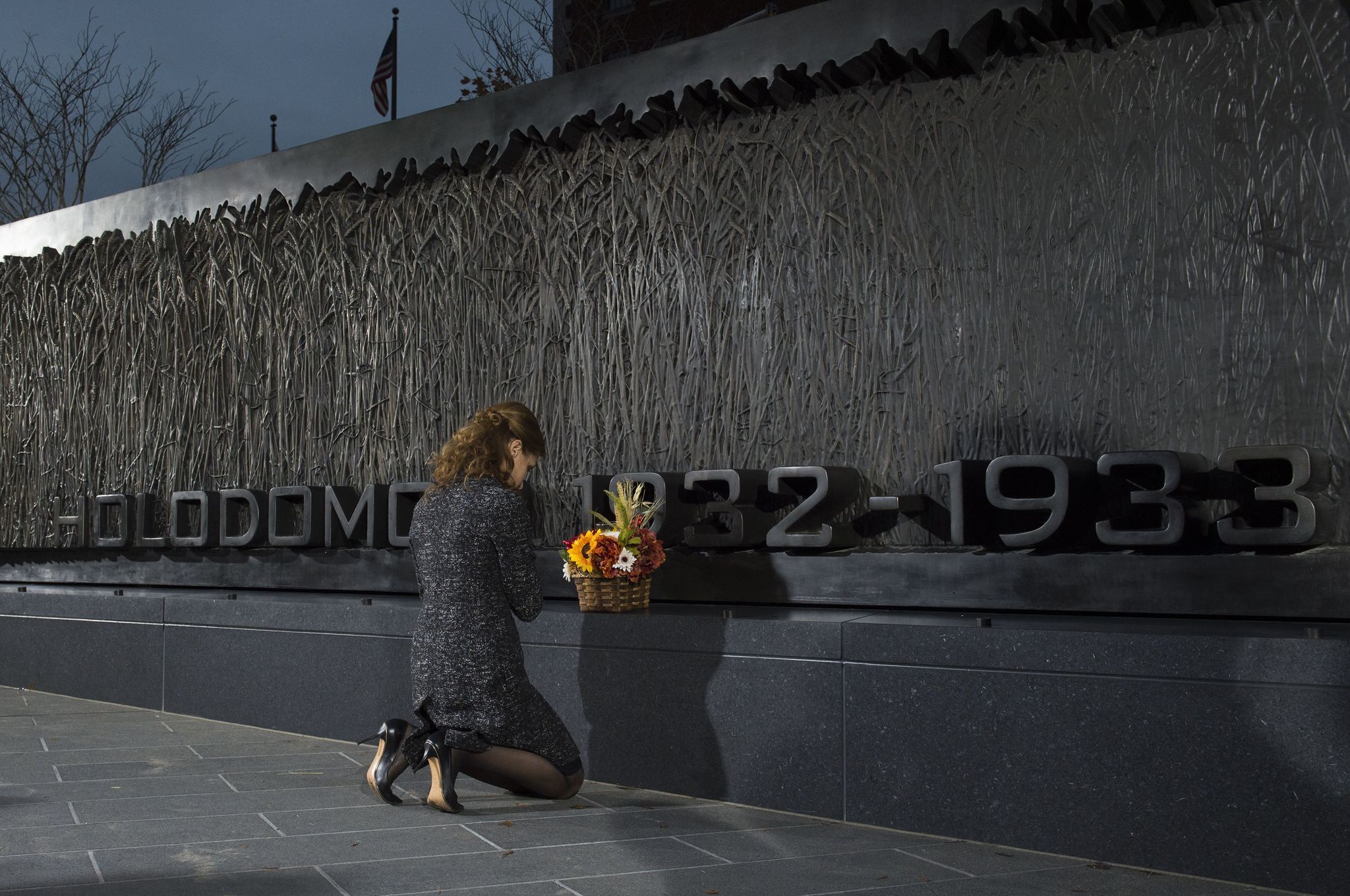
By Eric Margolis
I have been repeatedly shocked to receive letters from young Americans and Canadians of Ukrainian descent saying they had known nothing about the 1930’s genocide, or “Holodomor,” until reading about it in my columns. Hopefully, more will now know.
From 1932–33, Stalin and henchmen, Lazar Kaganovitch and Vyacheslav Molotov, conducted a merciless campaign to crush resistance by Ukrainian farmers to communism and collectivization. They isolated Ukraine, then cut off all food supplies and seeds. Six to nine million Ukrainians died from the ensuing man-made famine and mass shootings of “anti-State elements” by secret police execution squads. Cannibalism became common.
Large numbers of Ukrainians were also murdered during the Great Terror of 1936-38 in which an estimated 2 million Soviet citizens were shot and the same number died in Stalin’s concentration camps.
In the late 1940’s and early 1950’s, the Soviet penal system reached its zenith: 5.4 million people were prisoners in the gulag. Some 300,000 more Ukrainians were sent to concentration camps under the supervision of Commissar Nikita Khrushchev, and 21,259 were killed in Soviet “pacification” campaigns and against independence fighters. Other Ukrainian nationalist leaders were assassinated in Western Europe by special Soviet hit teams.
During the same period, Moscow unleashed terror on the tiny Baltic states. From March to May, 1949, 95,000 Lithuanians, 27,000 of them children, were sent to concentration camps. In total, 120,000 Lithuanians, 50,000 Latvians and 30,000 Estonians went to the gulag where the death rate was 51% per annum.
While the Western world rightly commemorates genocide inflicted on Armenians, Europe’s Jews, Cambodians, Rwandans, and Bosnians, it shamefully shut its eyes to the Ukrainian Holodomor because it was conducted by a key wartime ally whom President Franklin Roosevelt hailed as “Uncle Joe.”
Nor has the West ever acknowledged genocide against other peoples of the Soviet Union. In the Caucasus, Stalin sent most of the Chechen and Ingush peoples to the gulag, where 500,000 died. Yet when the children of the survivors fought for independence from Russia, the West branded them “Islamic terrorists.”
Up to three million Muslims of the Soviet Union died at Stalin’s hands, including 1.5 million Kazakhs and Crimean Tatars. Yet no holocaust memorials exist for them.
Nearly 100,000 Moldovans were murdered in a purge conducted by then Commissar Leonid Brezhnev, who would later lead the Soviet Union and be feted by Western leaders. Add to this butcher’s bill Volga Germans, Greeks, Cossacks, Armenians and Poles.
If we keep demanding that Germany and Japan atone for their wartime crimes, is it not time for our governments to finally recognize and atone their alliance with the biggest mass murderer in history, Josef Stalin, a man whose crimes exceeded those of Adolf Hitler by a factor of at least three or four times? Particularly so in the United States, where World War II has become something of a state religion and is endlessly invoked by conservatives and neocons to justify foreign military adventures.
Neither Roosevelt nor Churchill cared to admit they had allied themselves with a greater criminal than Hitler to wage their “Crusade for Freedom,” nor that the price of this compact with the devil was giving Eastern Europe to the Soviets. In the end, the Allies destroyed a lesser threat, Germany, and in doing so, created a greater one, the nuclear-armed Soviet Union.
Roosevelt’s and Churchill’s alliance with Stalin, whom they knew to be a mass murderer and tyrant, in my view denies the Allies any claim to have been waging a “just” or “good war.” When the lingering clouds of wartime propaganda finally dissipate, future historians will likely look back on the western Allies as not much morally superior to Germany or the USSR, though certainly less murderous.
Communists and leftists everywhere joined in covering up Stalin’s crimes. For example, to the end of his life, Jean Paul Sartre kept insisting Stalin’s gulag was a fiction created by western propaganda. The official Communist Party line was that the deaths of millions of Ukrainians was simply an unfortunate natural disaster that also affected other parts of the USSR.
In North America, intense attention to the Jewish Holocaust tended to push all other national historic tragedies into the background or completely eclipse them. The fact that during the 1930’s, many senior officers of Stalin’s Cheka, or secret police, were Jewish, including Kaganovitch, led to ferocious reprisals against Ukraine’s Jews in the following decade. As a result, Ukrainians were permanently branded “anti-Semites”; their suffering received scant sympathy.
Soviet dissident Vladimir Bukovsky demanded a Nuremburg trial for all the Soviet crimes, but unfortunately this will never happen. Most of the criminals are dead. The Soviet Eichmann, Lazar Kaganovitch, died peacefully in Moscow in 1991; Molotov died in 1986. In fact, not a single Soviet official was ever indicted for the crime committed by the state from the 1920’s to 1953, though many Cheskisti were liquidated during Stalin’s purges.
Related posts:
Views: 1
 RSS Feed
RSS Feed
















 January 18th, 2021
January 18th, 2021  Awake Goy
Awake Goy  Posted in
Posted in  Tags:
Tags: 
















